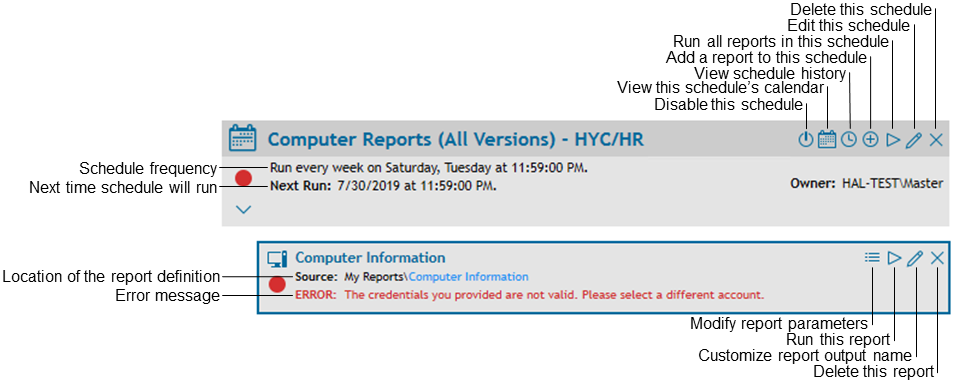Printing a Report
Once you run a report, you can print the entire report, or just specific pages.
|
1 |
|
2 |
Click the Print button. |
|
4 |
Click Print. |
Exporting a Report to Other Formats
Before or after running a report, you can export it to one of the following formats:
|
• |
|
• |
|
• |
|
• |
|
• |
|
3 |
In the sidebar, click Export to CSV. For more information, see Setting CSV File Export Options . Provide a name and location for the file, and click Save. Click Yes to open the file or click No to return to your report. |
Select a format for the resulting file.
Click Export Options, set the appropriate options, and click OK.
Provide a name and location for the file, and click Save.
|
3 |
In the sidebar, click Run report. and wait for the report to finish. |
|
4 |
Click the Export drop-down to display export options. |
|
5 |
Click the Export To drop-down to display a list of formats. |
|
9 |
Click Yes to open the file. |
Configuring a Default SMTP Server
|
1 |
On the Report Manager System Configuration tab, click Configure SMTP server used by Enterprise Reporter. |
|
4 |
|
7 |
If you want to test the Host configuration, press Click to test your connection. |
Scheduling Reports
You can create a schedule, or a series of schedules, to run reports. Once you have created a schedule, you can add reports and set the parameters for the reports. You can view a calendar showing when the reports will run based on the schedule. When you are deciding how often to run your reports, make sure you understand how often the data on which you are reporting is collected. Your reporting interval needs to be at least the size of the data collection interval, or there will not be any new information in the reports. For more information on data freshness, see Running Reports . Each schedule card has the option to disable or enable the schedule if the need arises. The Schedule page also contains the option to sort all reports within each schedule by name or by type.
You can add the same report to a single schedule more than once, or to different schedules. This allows you to schedule different versions of the report by providing different parameter values. In order to help you keep track of the various versions, you can provide a description of the parameter values. This description also appears on the scheduled report card. Figure 3 shows this information on the scheduled report card.

